Overview
This document serves as an introduction to Orchestrator functionality and architecture. Operators may find this useful to better understand their deployment.
Functionality
Magma’s Orchestrator is a centralized controller for a set of networks. Orchestrator handles the control plane for various types of gateways in Magma. Orchestrator functionality is composed of two primary components
- A standardized, vendor-agnostic northbound REST API which exposes configuration and metrics for network devices
- A southbound interface which applies device configuration and reports device status
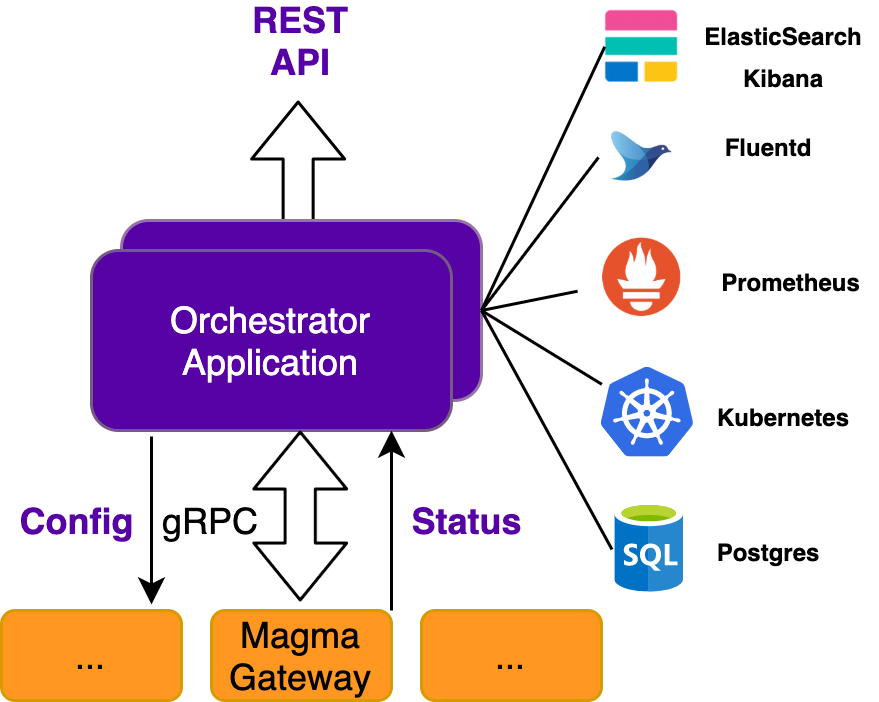
At a lower level, Orchestrator supports the following functionality
- Network entity configuration (networks, gateway, subscribers, policies, etc.)
- Metrics querying via Prometheus and Grafana
- Event and log aggregation via Fluentd and Elasticsearch Kibana
- Config streaming for gateways, subscribers, policies, etc.
- Device state reporting (metrics and status)
- Request relaying between access gateways and federated gateways
Architecture
Orchestrator follows a modular design. Core Orchestrator services
(located at orc8r/cloud/go) provide domain-agnostic implementations of
the functionality described above. Orchestrator modules, such as lte
(located at lte/cloud/go), provide domain-specific knowledge to the
core services. This modularity allows Orchestrator to remain flexible to new
use-cases while allowing operators to only deploy the services needed for their
specific use-case.
Controller Supercontainer (pre-v1.3)
Prior to v1.4, the Orchestrator application was deployed in a single “supercontainer” on Kubernetes.
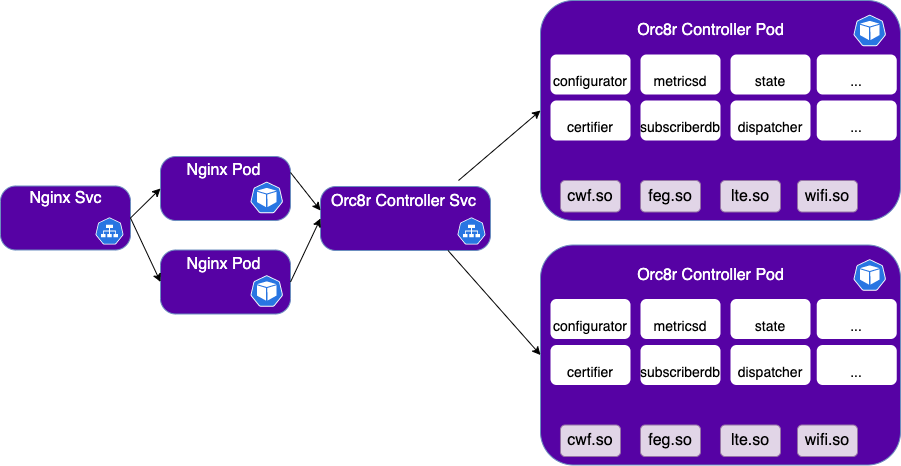
Modularity was achieved via the following plugin interface
type OrchestratorPlugin interface {
GetName()
GetServices()
GetSerdes()
GetMconfigBuilders()
GetMetricsProfiles()
GetObsidianHandlers()
GetStreamerProviders()
GetStateIndexers()
}
Each Orchestrator module (e.g. lte, feg, cwf) implemented this interface.
Plugins were built into the controller container image and loaded into memory for
each service at runtime.
Service Mesh (v1.4+)
Starting in v1.4, Orchestrator is deployed as a service mesh. Every Orchestrator service is now deployed with its own Kubernetes service and pod.
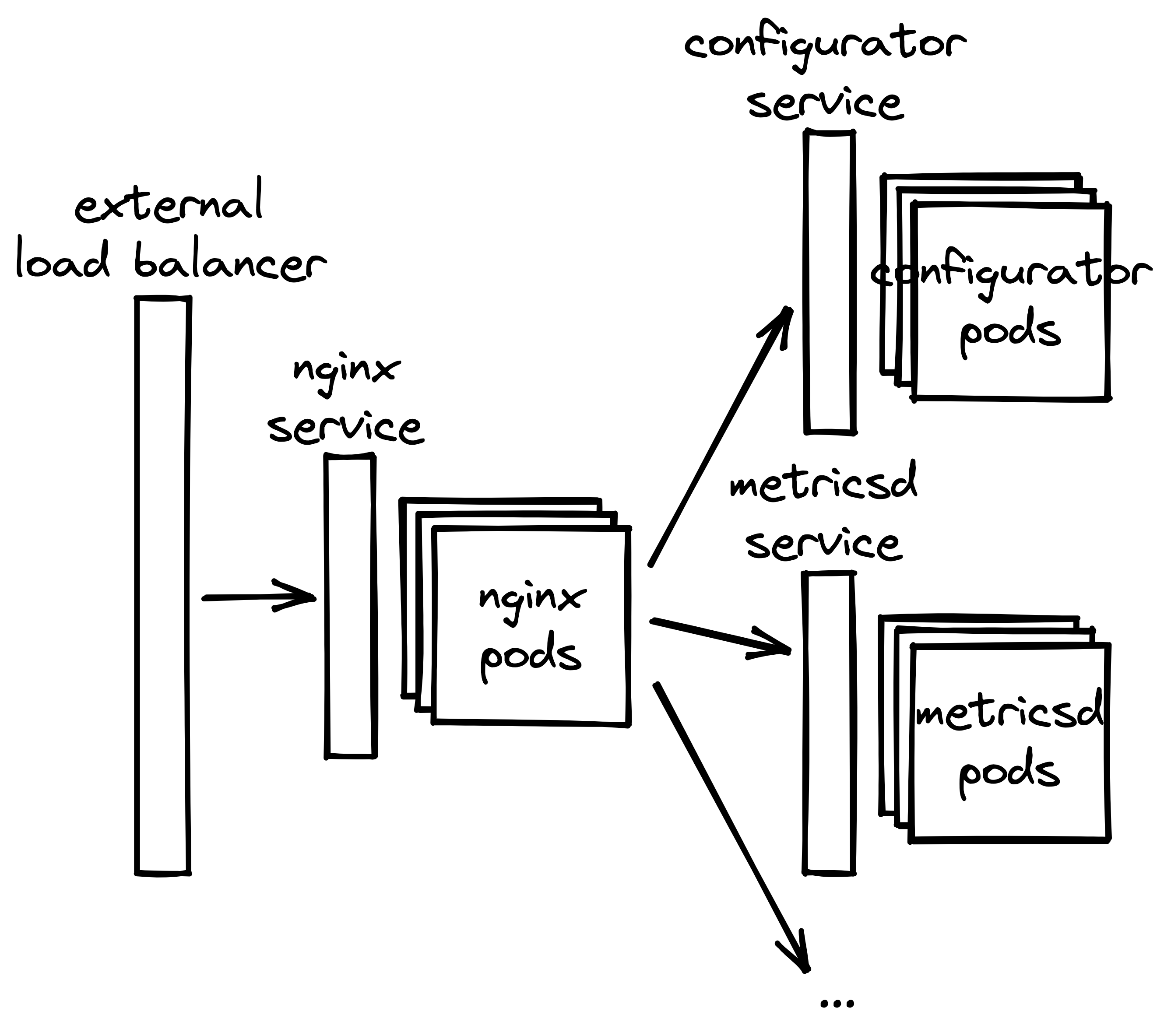
The service mesh changes provide the following benefits
- Major memory reduction from the removal of the Orchestrator plugins
- Better monitoring via open source tooling
- Ability to horizontally scale specific services
To achieve the same modularity described above, the in-memory plugin has been decomposed into strictly RPC interfaces. Individual services in an Orchestrator module register labels and annotations in its Kubernetes service definition to declare what functionality the service provides. Core Orchestrator services then query the Kubernetes API to discover service functionality.
Configuration
The following diagram displays an example call flow for LTE gateway configuration
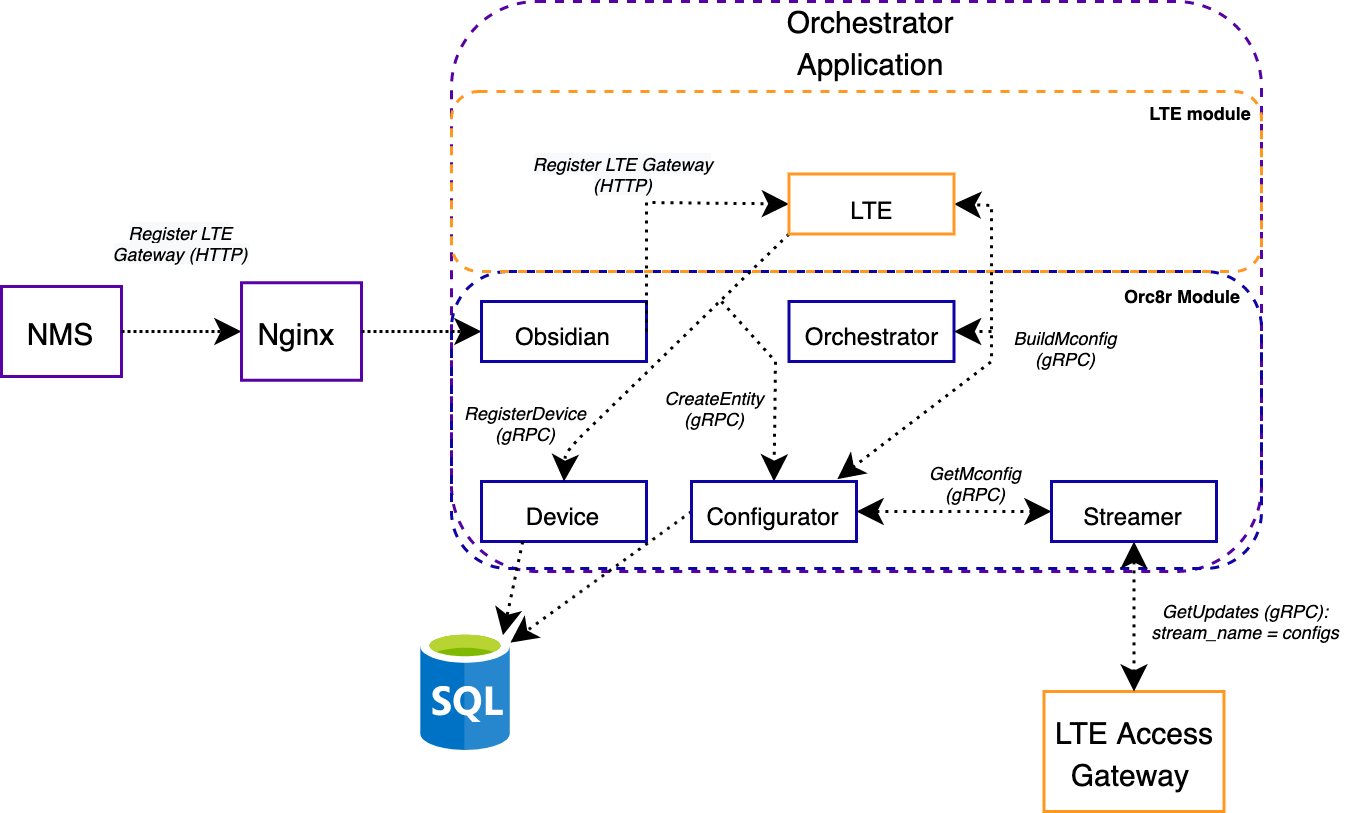
Metrics
The following diagram displays the call flow for the metrics pipeline
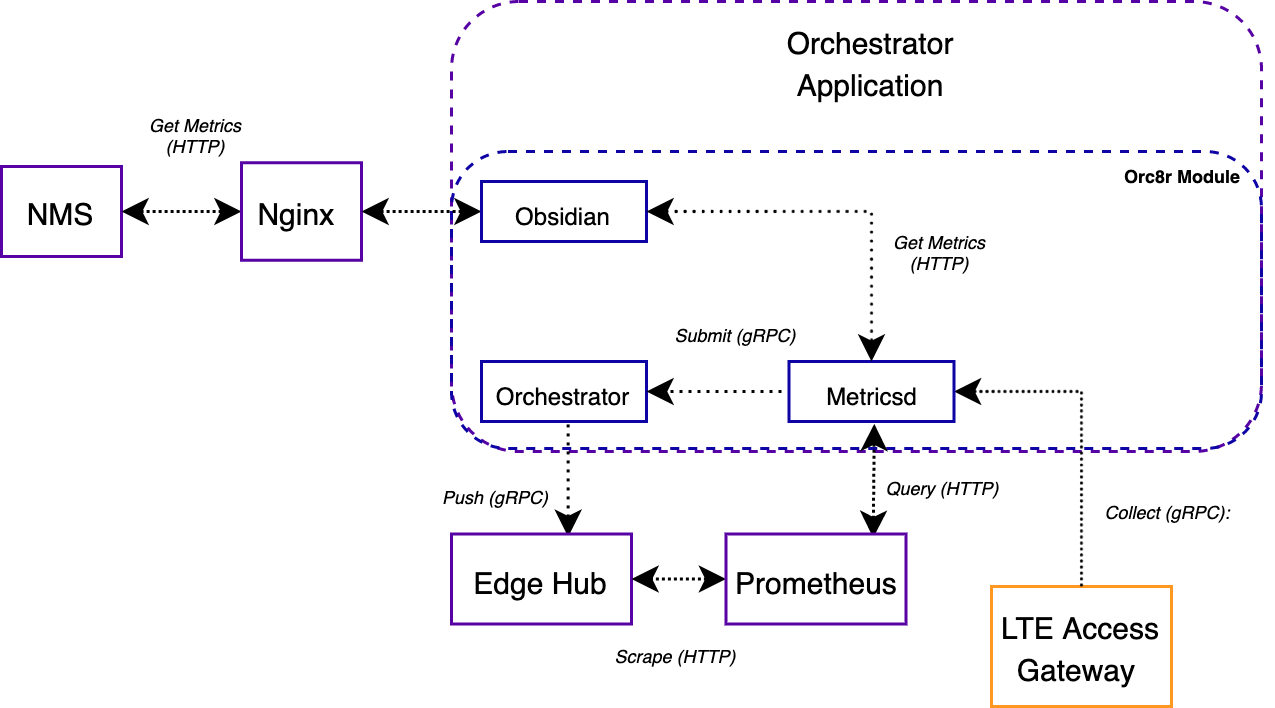
Services
This section outlines the functionality of each service in the core Orchestrator, LTE, and FeG modules.
Orchestrator
- accessd stores, manages and verifies operator identity objects and their rights to access (read/write) entities
- analytics periodically fetches and aggregates metrics for all deployed Orchestrator modules, exporting the aggregations to Prometheus
- bootstrapper manages the certificate bootstrapping process for newly registered gateways and gateways whose cert has expired
- certifier maintains and verifies signed client certificates and their associated identities
- configurator maintains configurations and metadata for networks and network entity structures
- ctraced handles gateway call traces, exposing this functionality via a CRUD API
- device maintains configurations and metadata for devices in the network (e.g. gateways)
- directoryd stores subscriber identity (e.g. IMSI, IP address, MAC address) and location (gateway hardware ID)
- dispatcher maintains SyncRPC connections (HTTP2 bidirectional streams) with gateways
- metricsd collects runtime metrics from gateways and Orchestrator services
- obsidian verifies API request access control and reverse proxies requests to Orchestrator services with the appropriate API handlers
- orchestrator provides
- Mconfigs for configuration of core gateway service configurations (e.g. magmad, eventd, state)
- Metrics exporting to Prometheus
- CRUD API for core Orchestrator network entities (networks, gateways, upgrade tiers, events, etc.)
- service_registry provides service discovery for all services in the Orchestrator by querying Kubernetes's API server
- state maintains reported state from devices in the network
- streamer fetches updates for various data streams (e.g. mconfig, subscribers, etc.) from the appropriate Orchestrator service, returning these to the gateways
- tenants provides CRUD interface for managing NMS tenants
LTE
- ha provides interface for secondary gateways in an HA deployment to find offload status for UEs
- lte provides
- Mconfigs for configuration of LTE-related gateway service configurations (e.g. mme, pipelined, policydb)
- CRUD API for LTE network entities (LTE networks, LTE gateways, eNodeBs, etc.)
- policydb manages subscriber policies via a northbound CRUD API and a southbound policy stream
- smsd provides CRUD support for SMS messages to be fetched by LTE gateways
- subscriberdb manages subscribers via a northbound CRUD API and a southbound subscriber stream
FeG
- feg provides
- Mconfigs for configuration of FeG-related gateway service configurations (e.g. s6a_proxy, session_proxy)
- CRUD API for LTE network entities (FeG networks, federated gateways, etc.)
- feg relay relays requests between access gateways and federated gateways
- health manages active/standby clusters of federated gateways
